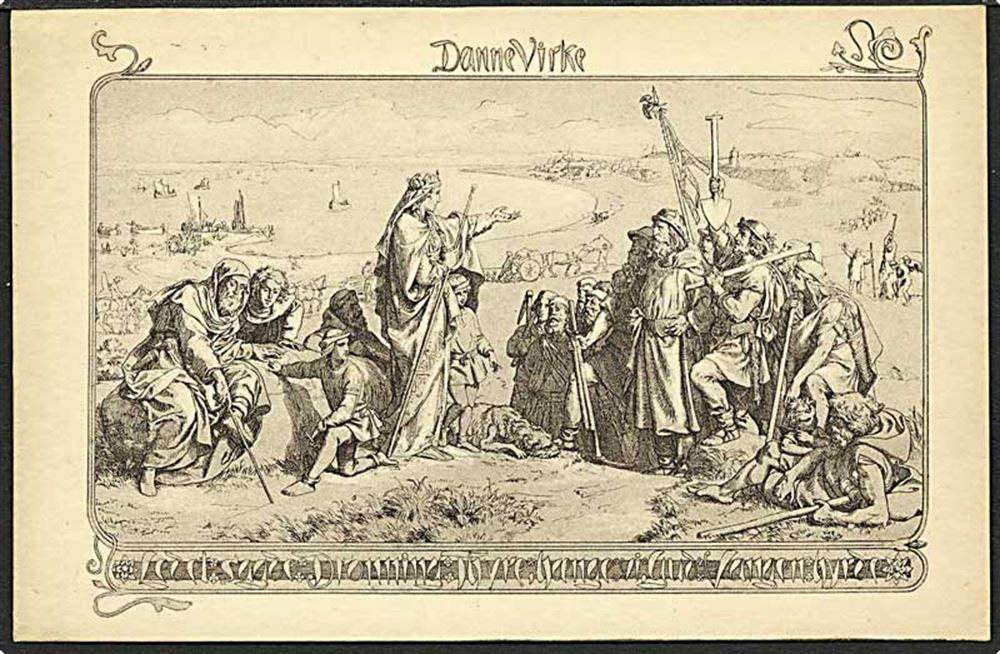- Joined
- Feb 13, 2006
- Messages
- 4,580
- Reaction score
- 82
In honor of international women's day, I thought it would be fitting to make a thread in which we each offer a female figure from history that we admire and that we believe impacted world events.
I offer up the former Danish Queen, Thyra Dannebod, the Pride of Denmark (Danebod means pride of Denmark). Thyra married Gorm the Old, the first historically recognized King of Denmark. She also fathered the famous Viking King, Harold Bluetooth.
The reason Thyra is a famous queen and stands on her own is her involvement in the building of a fortification known as the Danevirke ("earth work of the Danes") in what is now Schleswig-Holstein, Germany. The story goes that the the Holy Roman Emperor, Otto I, was trying to court Thyra and she led him on for a year so that the Danes could buy the time needed to build the the fortification and defend the kingdom from their Saxon foes to the south. New archeological evidence shows that the Danevirke existed long before Thyra was born so it is believed it was expanded and enlarged and fortified with timbers and a ditch during her time.
The Danish historian Arild Huitfeldt wrote in his Chronicles of the Kingdom of Denmark: "Then summons Queen Thyra, wife of Gorm the Old, Danes from all the kingdom's regions to meet at the border and under her supervision they built a wall of earth and timber from Slien over the moors to Trene. The Scanians received the Western section from Karlegat to Trene. Zealanders and Funen dwellers received the section east from Slien to Karlegat. Jutlanders provided provisions to the whole army.
The Danes would man the Danevirke many times throughout history in their defense.
Over the years conflicting accounts, dubious assertions, and archeological evidence has cast doubt on various aspects of Thyras life and story. I don't know that anybody knows for sure what importance her contribution to the Danevike played in Denmarks history or defense. It was started long before her birth and was being revamped long after her death. What isn't in question is the link and the association between Thyra and the Danevirke, even if their are questions about the legend behind the story. I believe Thyra rose to the defense of her kingdom and her people against the threats from abroad.
The Danevirke has become a symbol for the Danish people and the idea that they are a unique people with a unique culture and history.
Thyra ordering the building of the Danevirke

Danevirke today

Thyras runestone

https://en.m.wikipedia.org/wiki/Thyra
https://en.m.wikipedia.org/wiki/Danevirke
https://en.m.wikipedia.org/wiki/Gorm_the_Old
I offer up the former Danish Queen, Thyra Dannebod, the Pride of Denmark (Danebod means pride of Denmark). Thyra married Gorm the Old, the first historically recognized King of Denmark. She also fathered the famous Viking King, Harold Bluetooth.
The reason Thyra is a famous queen and stands on her own is her involvement in the building of a fortification known as the Danevirke ("earth work of the Danes") in what is now Schleswig-Holstein, Germany. The story goes that the the Holy Roman Emperor, Otto I, was trying to court Thyra and she led him on for a year so that the Danes could buy the time needed to build the the fortification and defend the kingdom from their Saxon foes to the south. New archeological evidence shows that the Danevirke existed long before Thyra was born so it is believed it was expanded and enlarged and fortified with timbers and a ditch during her time.
The Danish historian Arild Huitfeldt wrote in his Chronicles of the Kingdom of Denmark: "Then summons Queen Thyra, wife of Gorm the Old, Danes from all the kingdom's regions to meet at the border and under her supervision they built a wall of earth and timber from Slien over the moors to Trene. The Scanians received the Western section from Karlegat to Trene. Zealanders and Funen dwellers received the section east from Slien to Karlegat. Jutlanders provided provisions to the whole army.
The Danes would man the Danevirke many times throughout history in their defense.
Over the years conflicting accounts, dubious assertions, and archeological evidence has cast doubt on various aspects of Thyras life and story. I don't know that anybody knows for sure what importance her contribution to the Danevike played in Denmarks history or defense. It was started long before her birth and was being revamped long after her death. What isn't in question is the link and the association between Thyra and the Danevirke, even if their are questions about the legend behind the story. I believe Thyra rose to the defense of her kingdom and her people against the threats from abroad.
The Danevirke has become a symbol for the Danish people and the idea that they are a unique people with a unique culture and history.
Thyra ordering the building of the Danevirke

Danevirke today
Thyras runestone

https://en.m.wikipedia.org/wiki/Thyra
https://en.m.wikipedia.org/wiki/Danevirke
https://en.m.wikipedia.org/wiki/Gorm_the_Old







